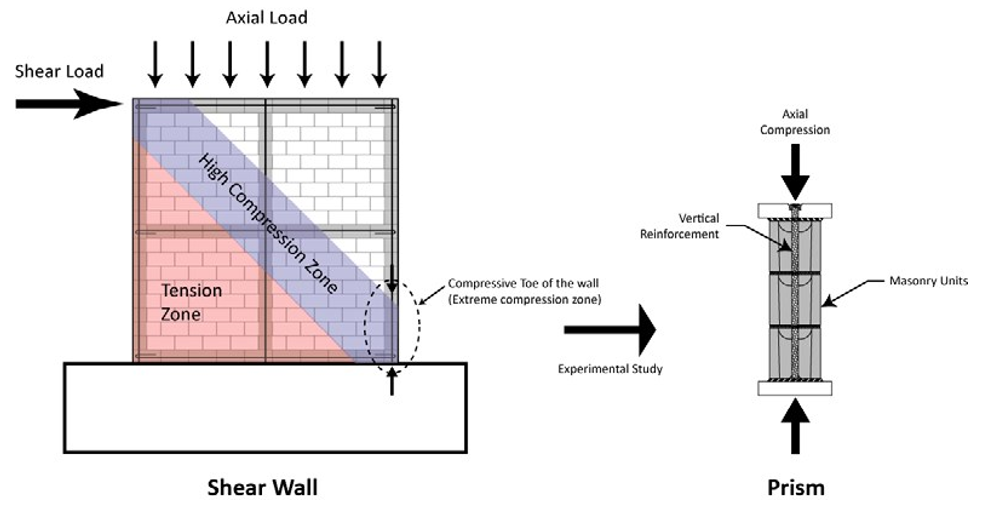Majid Maleki1, A. A. El-Damatty2, R. G. Drysdale3, and A. A. Hamid4
- D., Centre for Effective Design of Structures, Department of Civil Engineering, McMaster University, Hamilton ON, L8S 4L7, Canada, malekim@mcmaster.ca
- Professor, Department of Civil and Environmental Engineering, The University of Western Ontario, London, ON, N6A 5B8, Canada, damatty@uwo.ca
- Professor Emeritus, Centre for Effective Design of Structures, Department of Civil Engineering, McMaster University, drysdale@mcmaster.ca
- Professor, Department of Civil and Architecture Engineering, Drexel University, Philadelphia, PA, 19104, USA, hamidaa@drexel.edu
ABSTRACT
In this article, a computationally efficient numerical (finite element) technique is presented to simulate the in-plane behaviour of partially grouted reinforced masonry structures with the main focus on single-storey masonry shear walls. An orthotropic smeared crack model is employed with the masonry and reinforcing steel bars represented using adjoining overlaid elements. The interface of mortar joint and masonry unit is modelled using a plasticity model. The proposed model also includes the effect of buckling of vertical reinforcement in the compression zone. The capability of the model in predicting response of partially grouted-reinforced masonry shear walls under in-plane loading is evaluated by direct comparison to experimental results. In general, acceptable accuracy was observed in numerically predicted lateral load carrying capacities and load-displacement curves in both pre- and post-peak regimes.
KEYWORDS: Finite Element, Numerical, Partially Grouted, Reinforced, Shear Wall, Masonry
A2-5



